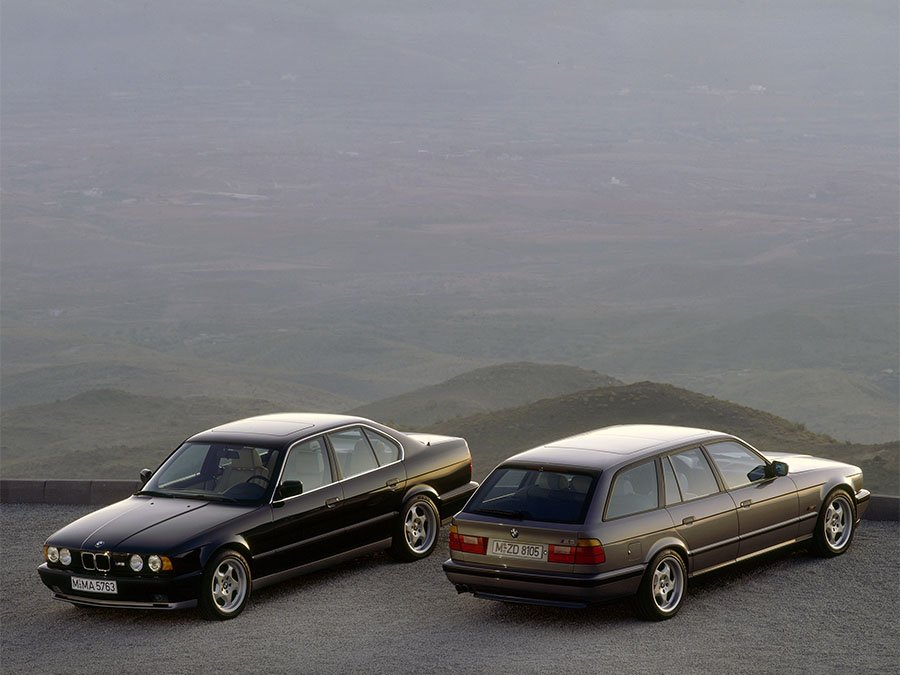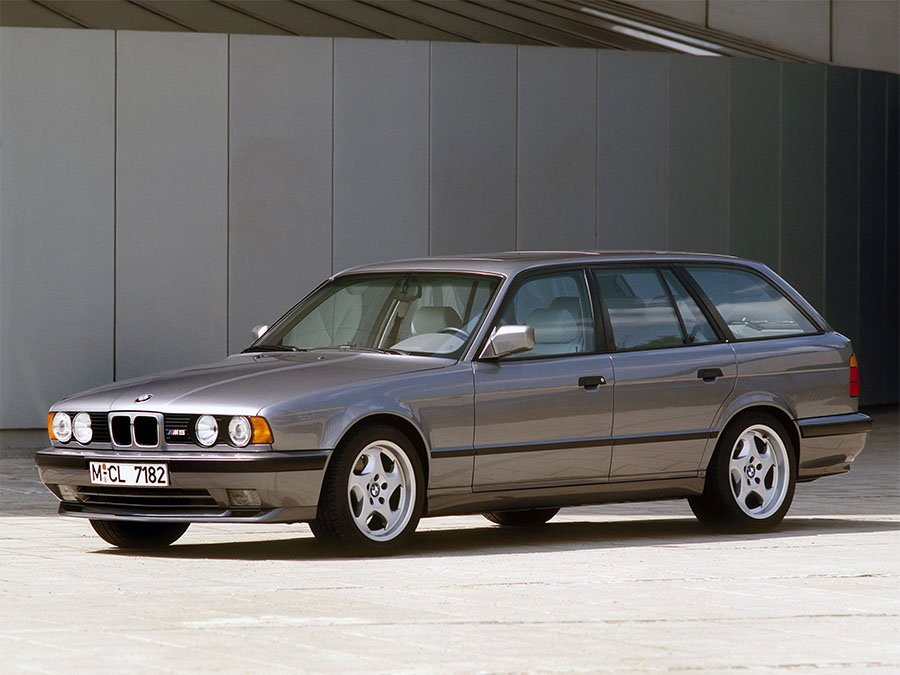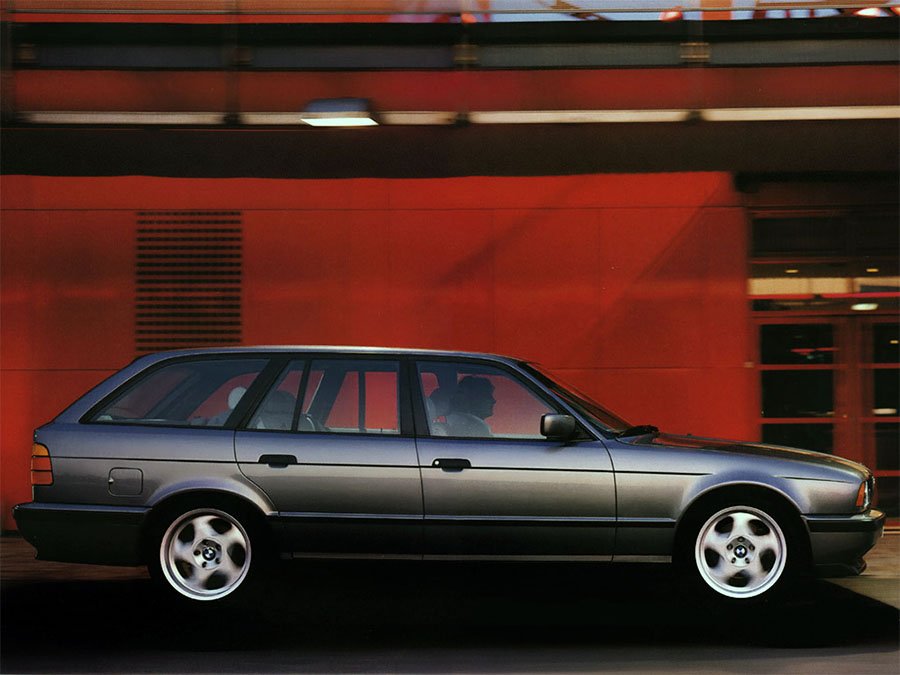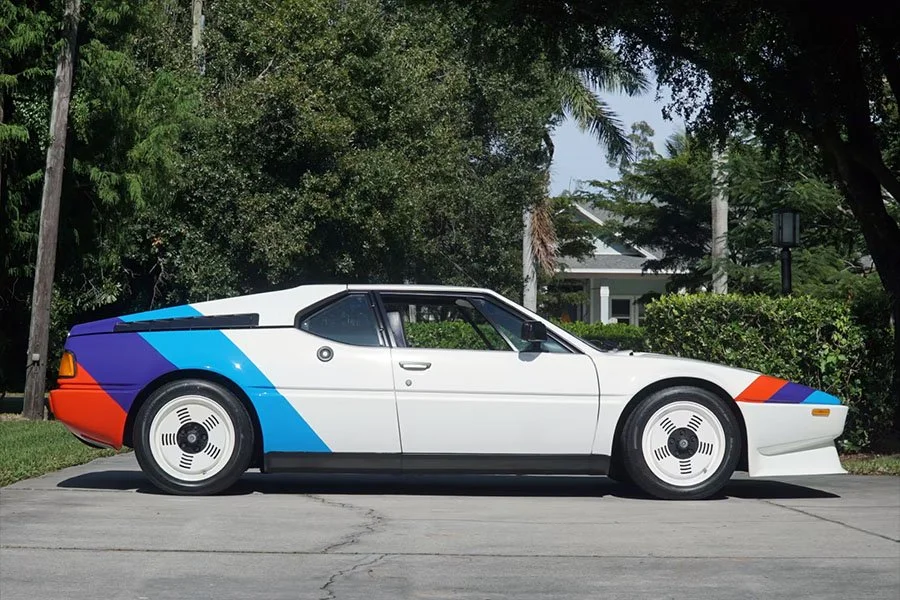Guide: BMW E34 M5 3.8 - a Historical & Technical Appraisal
/BACKGROUND
BMW launched the original E12 5-series in 1972. It was the mid-range saloon in a line-up that would ultimately go on to comprise the entry level 3-series (E21) and the flagship 7-series saloon (E23). There was also the handsome pillar-less 6-series coupe (E24) which initially shared the same platform as the E12.
The new range offered best-in-class performance and outstanding build quality. With their trademark shark nose styling and superlative performance, these cars transformed BMW into a genuine rival for Mercedes-Benz.
Racing also played its part in promoting BMW to the big league; the Bavarian firm branched out from Touring Cars to later embark on GT and Prototype campaigns. In the early 1980s, a successful engine supply deal with Brabham also saw BMW conquer Formula 1.
After BMW Motorsport was established in late 1971, a number of high performance road cars had been launched which capitalised on the firm’s sporting credentials. Iconic models like the 3.0 CSL and 2002 Turbo were subsequently joined by Motorsport iterations of the E12 5-series saloon.
Even in Germany, these early Motorsport 5-series were not widely promoted and did not appear as official models. However, within a few years, the firm eventually caved to customer demand; an E12 M535i was offered through the official main dealer network following its launch at the Frankfurt Motor Show in September 1979.
A replacement - now dubbed the M5 - followed on the updated E28 platform in January 1985.
This in turn was followed by a similarly uprated machine based on the all-new E34 platform in late 1988.
The E34 was the first clean sheet 5-series since the original E12 had been launched back in 1972. Although BMW had transitioned the E12 into the E28 trim for the 1982 model year, the revamp was not that comprehensive and management knew an entirely new design would be required before the 1990s dawned.
As expected, an M5 joined the range a few months after the E34 was introduced. It followed a by now well-established approach to BMW’s M division variants; in addition to a vastly more powerful engine, an array of chassis enhancements were added along with an uprated gearbox and some subtle cosmetic upgrades.
E34 M5s were assembled at BMW Motorsport’s Garching facility where bodies received from the normal Dingolfing production line were finished by hand.
However, it was not long before BMW began to offer an improved, even more powerful iteration.
Three years after the original 3.6-litre M5 had been launched (in September 1988), BMW unveiled a 3.8-litre version (at the Frankfurt Motor Show in September 1991).
In addition to its bigger engine and advanced new suspension system, the 3.8-litre M5 was notable as it could be ordered as a Touring (albeit in left-hand drive only). Prior to this, no BMW Motorsport production car had ever been offered as a station wagon / estate.
Unfortunately, the 3.8-litre M5 was never offered in markets like North America, Japan, the Middle East or South Africa. Instead, cars bound for these locations still used the old 3.6-litre motor.
ENGINE / TRANSMISSION
The biggest changes took place under the hood where BMW Motorsport installed the final evolution of S38 straight six engine.
The S38 had started life as a catalysed wet-sump version of the dual overhead camshaft 24 valve motor created for the E26 M1 supercar. Since then, it had grown from 3.5 to 3.6 and now 3.8-litres.
Like its predecessors, the new Type S38 B38 motor incorporated a cast-iron block and light alloy head.
Displacement was enlarged by 260cc to 3795cc. This was achieved by increasing the bore to 94.6mm (up from 93.4mm) and extending the stroke to 90mm (up from 86mm).
In addition, BMW Motorsport fitted an array of new high performance parts to include larger intake and exhaust valves, lightweight pistons, shorter connecting rods and bigger throttle bodies (50mm instead of 46mm). The intake and exhaust manifolds were redesigned and new metal catalysts offered reduced back-pressure and better heat conduction. There was also a dual-mass flywheel with harmonic balancer.
Engine management was via the latest Bosch Motronic 3.3 system to which revised throttle butterflies were linked. Ignition was now distributor-less with six coils.
The compression ratio was hiked from 10.0:1 to 10.5:1.
All told, peak output was now 335bhp at 6900rpm and 295lb-ft at 4750rpm.
For comparison, the outgoing 3.6-litre motor had pumped out 311bhp at 6900rpm and 266lb-ft at 4750rpm.
A new clutch was fitted that required less effort to operate. Otherwise, the transmission was the same as before: a Getrag 280/5 five-speed manual. A limited-slip differential with 25% locking factor was fitted as standard.
CHASSIS
The other major mechanical change made to this latest iteration of the M5 concerned its suspension.
The 3.8-litre M5 came with new Adaptive M Suspension which was a BMW Motorsport-developed version of the Electronic Damping Control system that had been introduced in the E32 7-series.
Adaptive M Suspension electronically selected the optimum shock rates based on factors such as road speed, steering input, acceleration / deceleration loads and lateral body movement.
Handsome new M System II five-spoke alloy wheels were also fitted. As before, they measured 8 x 17-inches all round on the Saloon whereas the Touring came with the normally optional 9-inch wide rear wheels as standard.
The rest of the running gear was left unchanged.
Each 3.8-litre M5 started life as a standard E34 pressed steel bodyshell with MacPherson strut front and semi-trailing arm rear suspension.
The wheelbase measured 2761mm.
BMW Motorsport fitted firmer springs (self-levelling at the rear) which gave a 20mm lower ride height than other E34 variants. Firmer dampers were fitted along with thicker anti-roll bars (up from 23mm to 25mm at the front and from 15mm to 18mm at the rear).
Toe-in was now adjustable at the rear.
Stopping was courtesy of 315mm diameter ventilated discs up front and 300mm solid discs at the back.
Bosch ABS was standard along with power steering. M5s used a quicker, more responsive steering ratio than other E34s (15.6:1 instead of 16.2:1).
A long-range 90-litre fuel tank was housed in the trunk floor.
BODYWORK
In addition to the aforementioned set of special five-spoke wheels, the M5 came with a number of cosmetic enhancements.
Like the 3.6-litre variant, the 3.8 ran a special front apron with a wide bank of horizontal intakes and a discrete chin spoiler. Deep side skirts were fitted along with an extended rear apron that housed a cutaway for the left-side exiting dual exhausts.
The front spoiler, side skirts and lower portion of the rear apron could be configured in a choice of two colours: Diamond Black Metallic or Granite Silver Metallic.
Another unique M5 detail was the satin black panel between the tail lights (to which the licence plate was attached).
M5 badges were fitted to the front grille and trunk lid.
INTERIOR
Aside from a new four-spoke airbag Motorsport steering wheel and new sill plates, the interior was practically unchanged.
Compared to other E34s, M5-specific features included a leather-trimmed Motorsport gear knob with illuminated shift pattern, red needles, an oil temperature gauge underneath the rev counter (instead of a fuel economy meter) and a Motorsport logo between the speedometer and rev counter.
Either side of large analogue read outs for road and engine speed were smaller gauges for fuel level and water temperature. At the base of the binnacle was an array of digital read outs that supplied additional information.
Angled towards the driver was a centre console that housed the fresh air vents, audio system and ventilation controls.
The default seat upholstery was Motorsport fabric with leather bolsters. Sports front seats that were an option on the regular E34 were fitted as standard.
M5s additionally came with a fully carpeted trunk complete with luggage net and a special storage compartment on the left-hand side.
OPTIONS
Four new optional extras offered on the 3.8-litre M5 were aerodynamic M exterior mirrors, ZF Servotronic power steering, M cloth upholstery with Amaretta alcantara bolsters and the desirable Nurburgring Pack.
The Nurburgring Pack comprised 9-inch wide rear wheels, a thicker rear anti-roll bar (19mm on the Saloon and 20mm on the Touring), ZF Servotronic power steering and an EDC switch on the dash that enabled the dampers to be locked in the stiffest setting.
In addition, most of the previous options were carried over to include 9-inch wide rear wheels for the Saloon, a body coloured rear spoiler for the Saloon, Shadowline exterior trim, headlight wash / wipe and deletion of the M5 badges.
Upholstery options comprised the basic leather seat upgrade, extended leather (to include the centre console, grab handles and glovebox lid) or full Nappa upholstery (with hide covering the upper dash, A pillars, upper door panels, sun visors and rear parcel shelf). When full Nappa upholstery was specified, an alcantara suede headliner was fitted. Two-tone upholstery was another option.
Other cockpit upgrades included electric seats, electric seats with memory function, heated seats (front and rear or front only), automatic climate control, an electric sunroof, an electric rear sun blind, burr walnut inserts, remote central locking, cruise control, an alarm system, an auto-dimming interior mirror, a green tinted windscreen, electric headrests, back seat reading lamps, a choice of audio systems and velour floor mats.
The M5 Touring could be specified with a dual power sunroof.
Via the BMW Individual department, special paint and upholstery could be requested along with the installation of electronic devices such as a phone, TV and even a fax machine.
WEIGHT / PERFORMANCE
Compared to the previous 3.6-litre M5, this latest iteration was 22kg lighter (1711kg compared to 1733kg).
The new M5 Touring came in at 1730kg.
Top speed was electronically limited to 155mph in both variants.
The 0-62mph time dropped from 6.2 to 6.1 seconds.
M5 20 JAHRE EDITION
In October 1992, a 20 Jahre Edition M5 was released to celebrate BMW Motorsport’s 20th anniversary.
20 examples were produced, all of which were based on the Saloon platform and painted Mugello Red with Jet Black wheel centres and Jet Black M5-specific sills and aprons.
Special features included high-backed Recaro SR front seats trimmed in M cloth with Anthracite Amaretta bolsters. The steering wheel, gear knob, gear gaiter and handbrake handle were upholstered in alcantara suede with red stitching. Carbonfibre dash and door inserts were fitted along with red BMW Motorsport-branded seatbelts.
The list of optional extras thrown in as standard comprised the Nurburgring Pack, Shadowline exterior trim, an electric sunroof, air-conditioning, M Technic exterior mirrors, headlight wash / wipe and a BMW Bavaria Cassette III audio system.
Each car also came with a numbered plaque mounted on the centre console.
PRODUCTION CHANGES
In September 1993, a non-Motorsport three-spoke airbag steering wheel became an option.
In May 1994, the Nurburgring Pack was discontinued because the thicker rear anti-roll bars it came with were now fitted as standard, as was the EDC damper lock switch on the dash. The ZF Servotronic power steering previously included as part of the Nurburgring Pack was still available via the options list.
At the same time, the M5 was uprated with a brand new six-speed Getrag Type D gearbox which dramatically improved acceleration times (the 0-62mph sprint was now four tenths quicker at 5.7 seconds).
BMW Motorsport also began to fit the M5 with bigger brake discs from the 850 CSi (345mm front and 328mm rear with uprated two-piece floating front calipers improved cooling).
New 18-inch diameter M Parallel Spoke wheels were another addition. 9-inch wide rear wheels were made standard.
Another easy-to-spot change was wider kidney grilles. These meant there was no space for an M5 badge at the front and a modified hood had to be installed.
Weight rose to 1725kg for the Saloon and 1786kg for the Touring.
M5 UK LIMITED EDITION
The M5 UK Limited Edition was made up of the last 50 cars exported to the United Kingdom. All 50 were Saloons as the Touring was never built in right-hand drive.
Two BMW Individual colour schemes were offered: Orinoco Metallic with two-tone Petrol and Mint extended Nappa leather and Graphite Birds-eye maple wood trim (35 built) and Rosso Red Metallic with Champagne extended Nappa leather and Natural Poplar wood trim (15 built).
These cars came Shadowline exterior trim, air-conditioning, electric front seats, an electric sunroof, the three-spoke airbag steering wheel, a storage net in the passenger footwell, headlight wash / wipe, a green-tinted winscreen strip and auto-dimming rear-view mirror.
Each was given a special wood shift knob, a matching parking brake handle and a numbered plaque on the centre console.
M5 TOURING ELEKTRA EDITION
The M5 Touring Elektra Edition was another BMW Individual special that comprised the last 20 Tourings destined for the Italian market.
The two colour schemes offered were Sterling Silver Metallic with Marine Blue Nappa leather upholstery and matching carpet (10 built) and British Racing Green with Hazlenut Nappa leather upholstery and Mexico Green carpet (10 built).
These cars came with Shadowline exterior trim, the dual power sunroof, air-conditioning, electric front seats with driver-side memory function, roof rails, a three-spoke airbag steering wheel, a storage net in the passenger footwell, an auto-dimming rear view mirror, an uprated audio system and headlight wash / wipe.
They also featured extended leather on the dash, centre console, door caps, door pulls and glove box door but the leather A-pillar trim, sun visors and Alcantara headliner normally fitted when the complete Nappa option was specified were not included.
Instead of a commemorative plaque, each car came with a special metal shift knob insert inscribed with Elektra script and the production number.
END OF PRODUCTION
Production figures for the 3.8-litre E34 M5 were as follows:
LHD Euro market Saloon (12/91 to 07/95) 2676 units (of which 404 had the six-speed gearbox)
RHD Euro market Saloon (12/91 to 06/95) 343 units (of which 138 had the six-speed gearbox)
LHD Euro market Touring (03/92 to 08/95) 891 units (of which 209 had the six-speed gearbox)
The 3.8-litre E38 M5 was replaced by the new V8-powered E39 iteration which BMW unveiled at the Geneva Motor Show in March 1998.
Text copyright: Supercar Nostalgia
Photo copyright: BMW - https://www.bmw.com







































